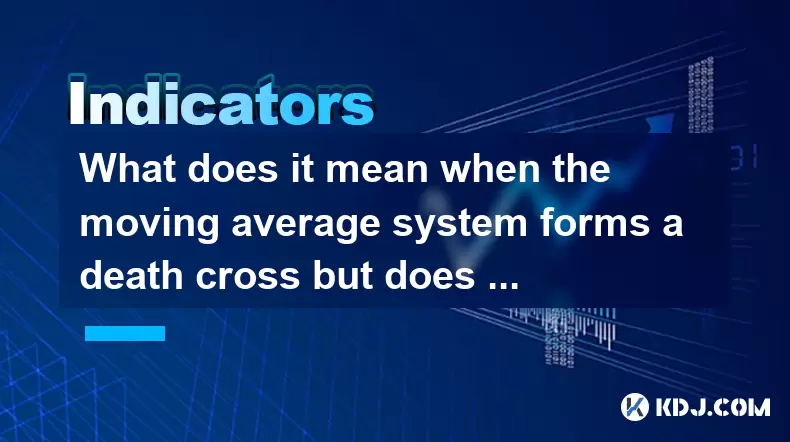-
 Bitcoin
Bitcoin $114800
-0.87% -
 Ethereum
Ethereum $4776
1.26% -
 XRP
XRP $3.035
-0.59% -
 Tether USDt
Tether USDt $0.9997
0.01% -
 BNB
BNB $868.3
-2.21% -
 Solana
Solana $207.8
2.24% -
 USDC
USDC $0.9999
0.00% -
 Dogecoin
Dogecoin $0.2321
-2.70% -
 TRON
TRON $0.3658
1.42% -
 Cardano
Cardano $0.9042
-1.85% -
 Chainlink
Chainlink $25.67
-0.24% -
 Hyperliquid
Hyperliquid $43.96
1.17% -
 Sui
Sui $3.679
-2.11% -
 Stellar
Stellar $0.4091
-1.83% -
 Ethena USDe
Ethena USDe $1.000
-0.01% -
 Bitcoin Cash
Bitcoin Cash $593.4
0.58% -
 Avalanche
Avalanche $25.53
0.89% -
 Hedera
Hedera $0.2476
-1.21% -
 Litecoin
Litecoin $119.7
-1.84% -
 UNUS SED LEO
UNUS SED LEO $9.609
0.34% -
 Toncoin
Toncoin $3.352
-0.91% -
 Shiba Inu
Shiba Inu $0.00001292
-2.45% -
 Uniswap
Uniswap $11.08
-1.13% -
 Polkadot
Polkadot $4.100
-1.09% -
 Cronos
Cronos $0.1609
4.53% -
 Dai
Dai $0.9999
0.00% -
 Bitget Token
Bitget Token $4.706
-0.88% -
 Aave
Aave $350.1
2.03% -
 Monero
Monero $268.0
0.06% -
 Ethena
Ethena $0.7069
-4.77%
What does it mean when the moving average system forms a death cross but does not decline?
A death cross in crypto signals potential bearish momentum, but price stability or rallies can occur if strong fundamentals, volume, or whale accumulation counter the signal.
Aug 13, 2025 at 11:35 am

Understanding the Death Cross in Cryptocurrency Technical Analysis
In cryptocurrency trading, the death cross is a technical indicator that occurs when the 50-day moving average (MA) crosses below the 200-day moving average (MA) on a price chart. This pattern is traditionally interpreted as a bearish signal, suggesting that short-term momentum is weakening relative to long-term momentum. Traders often view this as a precursor to a prolonged downtrend. However, in volatile markets such as those involving Bitcoin or Ethereum, a death cross may form without the expected price decline. This phenomenon raises questions about the reliability and context of the signal.
The formation of a death cross does not guarantee a price drop. It is a lagging indicator, meaning it reflects past price movements rather than predicting future ones. When the death cross appears but prices stabilize or even rise, it suggests that other market forces are counteracting the bearish signal. These forces may include macroeconomic developments, regulatory news, institutional accumulation, or strong support levels holding firm.
Why a Death Cross Might Not Lead to a Decline
Several factors can explain why a death cross fails to trigger a downward price movement. One key reason is market context. In a strong bullish trend, temporary pullbacks can cause the 50-day MA to dip below the 200-day MA, especially if the long-term trend remains intact. In such cases, the death cross is more of a consolidation signal than a reversal.
Another factor is volume dynamics. A death cross accompanied by low trading volume may lack conviction. If selling pressure is not supported by high volume, the bearish crossover may be dismissed by the market. Conversely, if buying volume surges shortly after the crossover, it can absorb the downward momentum and push prices higher.
Additionally, on-chain data from blockchain analytics can provide insights. For instance, if large holders (commonly known as "whales") are accumulating coins during the crossover period, their buying pressure can offset the technical bearishness. Metrics like exchange outflows or long-term holder accumulation often indicate strength beneath the surface.
Interpreting Price Action After the Death Cross
After a death cross forms, traders should closely monitor price action for confirmation or rejection of the bearish signal. Key levels to watch include:
- Support zones where price has previously reversed
- Volume spikes on upward or downward moves
- Candlestick patterns like bullish engulfing or hammer formations
- Divergences between price and momentum indicators such as the Relative Strength Index (RSI) or MACD
If price finds support near the 200-day MA and begins to rise, it may indicate that the long-term trend is still valid. In such cases, the death cross could be reinterpreted as a temporary dip in momentum rather than a structural breakdown. Traders might look for a golden cross (50-day MA crossing above 200-day MA) in the future as confirmation of renewed bullish momentum.
It's also important to assess the slope of the moving averages. If the 200-day MA is still trending upward, even after the crossover, it suggests underlying strength. A flattening or downward-sloping 200-day MA would carry more bearish weight.
How to Respond When a Death Cross Fails to Trigger a Drop
When a death cross appears but prices do not decline, traders should avoid making impulsive decisions. Instead, they should follow a structured approach to reassess the market:
- Reevaluate the broader trend using higher timeframes like the weekly or monthly chart
- Check for confluence with other technical indicators such as Fibonacci retracement levels or Bollinger Bands
- Monitor on-chain metrics like MVRV (Market Value to Realized Value) or NUPL (Net Unrealized Profit/Loss) to gauge investor sentiment
- Observe order book depth on major exchanges to detect hidden buying or selling pressure
For active traders, this scenario may present a contrarian opportunity. If fundamentals remain strong and technicals show resilience, entering long positions with tight risk management could be viable. Stop-loss orders should be placed below key support levels to limit downside risk.
Passive investors might choose to hold their positions, recognizing that short-term technical signals can be noisy in highly volatile crypto markets. Historical data shows that death crosses in Bitcoin have sometimes preceded extended sideways movements rather than crashes.
Case Studies: Death Crosses Without Declines in Crypto Markets
One notable example occurred in Bitcoin during 2019. A death cross formed in May, but instead of collapsing, BTC entered a consolidation phase before rallying from $6,000 to over $13,000 by June. The 200-day MA continued to slope upward, and on-chain data showed steady accumulation by long-term holders.
Another instance was in Ethereum in early 2021. A death cross appeared in February after a sharp correction, yet ETH quickly recovered and reached new all-time highs within weeks. This was driven by DeFi growth, institutional interest, and upgraded network fundamentals, all of which outweighed the technical bearish signal.
These cases illustrate that while the death cross is a widely watched indicator, its predictive power depends on the broader market environment. When fundamental catalysts are strong, technical patterns can be overridden.
Common Misconceptions About the Death Cross
Many traders assume that a death cross automatically means a crash is imminent. This is a misinterpretation of the indicator’s purpose. The death cross signals a shift in momentum, not an inevitable price collapse. It is particularly unreliable in low-liquidity altcoins or during consolidation phases.
Another misconception is that all timeframes carry equal weight. A death cross on a 4-hour chart may be reversed within days, while one on a weekly chart carries more significance. Traders must consider the timeframe relevance before acting.
Lastly, some believe that moving averages are infallible. However, they are smoothed representations of past prices and do not account for sudden news events or black swan occurrences. Relying solely on MAs without integrating other forms of analysis can lead to poor decisions.
Frequently Asked Questions
Can a death cross be bullish under certain conditions?
Yes, in a strong uptrend, a death cross can form during a deep correction but fail to lead to further declines if buying pressure returns. If the 200-day MA remains upward-sloping and volume supports a rebound, the death cross may simply reflect short-term volatility rather than a trend reversal.
How long should I wait to confirm whether a death cross is valid?
There is no fixed timeframe, but traders often wait for price to close above the 50-day MA or for the MACD to turn positive. Monitoring for at least 1–2 weeks on the daily chart can help determine whether the bearish signal holds or gets rejected.
Does the death cross work the same way across all cryptocurrencies?
No, its effectiveness varies. In highly volatile altcoins, death crosses may generate frequent false signals due to pump-and-dump cycles. In contrast, it tends to be more reliable in large-cap assets like Bitcoin and Ethereum, which have deeper liquidity and more consistent trends.
Should I sell my holdings immediately when a death cross appears?
Not necessarily. A death cross alone is not a sell signal. It should be evaluated alongside on-chain data, market sentiment, and macroeconomic factors. Many successful traders use it as a warning sign to tighten stop-losses or reduce exposure, not to exit entirely.
Disclaimer:info@kdj.com
The information provided is not trading advice. kdj.com does not assume any responsibility for any investments made based on the information provided in this article. Cryptocurrencies are highly volatile and it is highly recommended that you invest with caution after thorough research!
If you believe that the content used on this website infringes your copyright, please contact us immediately (info@kdj.com) and we will delete it promptly.
- Viral Memes, RWA Platforms, and DePIN Crushers: What's Hot in Crypto?
- 2025-08-24 14:45:20
- Meta's Hypernova Glasses: AR's Next Big Thing?
- 2025-08-24 15:05:15
- Down Under Showdown: Australia vs. South Africa in ODI Cricket
- 2025-08-24 15:10:14
- XYZVerse, Shiba Inu, and the 2025 Bull Cycle: A Meme Coin Evolution
- 2025-08-24 13:05:12
- WLFI Token, BingX, and the Trading Landscape: A New York Perspective
- 2025-08-24 12:45:20
- Aave, Governance, Allocation: Navigating DeFi's Shifting Sands
- 2025-08-24 12:45:20
Related knowledge

What does it mean when the +DI and -DI cross frequently in the DMI indicator but the ADX is flattening?
Aug 11,2025 at 03:15am
Understanding the DMI Indicator ComponentsThe Directional Movement Index (DMI) is a technical analysis tool composed of three lines: the +DI (Positive...

What does the sudden appearance of a "dark cloud cover" candlestick pattern during an uptrend indicate?
Aug 13,2025 at 11:35am
Understanding the 'Dark Cloud Cover' Candlestick PatternThe dark cloud cover is a bearish reversal pattern in technical analysis that typically appear...

What does it mean when the moving average, MACD, and RSI all send buy signals simultaneously?
Aug 11,2025 at 01:42pm
Understanding the Convergence of Technical IndicatorsWhen the moving average, MACD, and RSI all generate buy signals at the same time, traders interpr...

What does it mean when both the KDJ indicator and the RSI show overbought signals simultaneously?
Aug 13,2025 at 11:35am
Understanding the KDJ Indicator in Cryptocurrency TradingThe KDJ indicator is a momentum oscillator derived from the Stochastic Oscillator, widely use...

What does it mean when the price is trading above the SAR indicator but the red dots are densely packed?
Aug 09,2025 at 11:49pm
Understanding the SAR Indicator and Its Visual SignalsThe SAR (Parabolic Stop and Reverse) indicator is a technical analysis tool used primarily to de...

What does it mean when the candlestick chart forms a "Morning Star" but trading volume is sluggish?
Aug 12,2025 at 06:28pm
Understanding the Morning Star Candlestick PatternThe Morning Star is a three-candle bullish reversal pattern commonly observed in cryptocurrency pric...

What does it mean when the +DI and -DI cross frequently in the DMI indicator but the ADX is flattening?
Aug 11,2025 at 03:15am
Understanding the DMI Indicator ComponentsThe Directional Movement Index (DMI) is a technical analysis tool composed of three lines: the +DI (Positive...

What does the sudden appearance of a "dark cloud cover" candlestick pattern during an uptrend indicate?
Aug 13,2025 at 11:35am
Understanding the 'Dark Cloud Cover' Candlestick PatternThe dark cloud cover is a bearish reversal pattern in technical analysis that typically appear...

What does it mean when the moving average, MACD, and RSI all send buy signals simultaneously?
Aug 11,2025 at 01:42pm
Understanding the Convergence of Technical IndicatorsWhen the moving average, MACD, and RSI all generate buy signals at the same time, traders interpr...

What does it mean when both the KDJ indicator and the RSI show overbought signals simultaneously?
Aug 13,2025 at 11:35am
Understanding the KDJ Indicator in Cryptocurrency TradingThe KDJ indicator is a momentum oscillator derived from the Stochastic Oscillator, widely use...

What does it mean when the price is trading above the SAR indicator but the red dots are densely packed?
Aug 09,2025 at 11:49pm
Understanding the SAR Indicator and Its Visual SignalsThe SAR (Parabolic Stop and Reverse) indicator is a technical analysis tool used primarily to de...

What does it mean when the candlestick chart forms a "Morning Star" but trading volume is sluggish?
Aug 12,2025 at 06:28pm
Understanding the Morning Star Candlestick PatternThe Morning Star is a three-candle bullish reversal pattern commonly observed in cryptocurrency pric...
See all articles

























































































